Mobile-Based Training and Certification Framework for Teachers’ Professional Development
Abstract
1. Introduction
2. Theoretical Frameworks for Mobile Learning
3. Mobile-Based Training Certification Framework
- Training design and implementation.
- Ongoing support at the classroom level.
3.1. Training Design and Implementation
3.1.1. Support of Mobile Technology
3.1.2. Training Curriculum and Assessment
3.1.3. CPD Training Activities
3.1.4. Expert Support and Reward
3.1.5. Evaluation
3.2. Ongoing Support System
4. Piloting a Training Certification Course for Teachers
5. Designing Training Module through Mobile App
6. Procedure of Piloting Course
6.1. Registration
6.2. Course Structure
6.3. Online Survey
6.3.1. Sample Selection and Data Collection
6.3.2. Instrument Development Methodology
6.3.3. Pre and Post-Test Tool
6.3.4. Data Analysis
6.3.5. Ethical Considerations
7. Results
7.1. The Successful Completion of the Training Program
7.2. Feedback from Training Participants
- Many teachers found the mobile-based approach convenient and flexible, as it allowed them to access learning materials on the go and at their own pace.
- The integration of certification mechanisms was seen as a positive aspect of the framework, as it incentivized teachers to engage in the learning process and provided recognition for their efforts.
- Some teachers suggested that the framework could benefit from more interactive and collaborative learning activities to enhance engagement and facilitate knowledge sharing among peers.
- Additionally, some teachers noted that the framework could be adapted to address specific needs and challenges faced by teachers in different regions of Saudi Arabia.
- Pakistani teachers found the framework to be relevant and applicable to their context, as it addressed competencies that were important for teaching in Saudi Arabia and could also be relevant for teaching in Pakistan.
- The mobile-based approach was seen as a promising solution for providing TPD opportunities to teachers in remote areas of Pakistan who may have limited access to traditional face-to-face TPD programs.
- Some teachers suggested that the framework could benefit from incorporating more cultural sensitivity training to enhance teachers’ understanding of the Saudi Arabian context.
- Additionally, some teachers noted that the framework could be adapted to address specific needs and challenges faced by teachers in different regions of Pakistan.
8. Conclusions
Author Contributions
Funding
Institutional Review Board Statement
Informed Consent Statement
Data Availability Statement
Conflicts of Interest
References
- Alismaiel, O.A.; Cifuentes-Faura, J.; Al-Rahmi, W.M. Online Learning, Mobile Learning, and Social Media Technologies: An Empirical Study on Constructivism Theory during the COVID-19 Pandemic. Sustainability 2022, 14, 11134. [Google Scholar] [CrossRef]
- Government of Pakistan. Pakistan Education Statistics 2016–2017. Government of Pakistan, 2018. Available online: library.aepam.edu.pk/Books/Pakistan%20Education%20Statistics%202016-17.pdf (accessed on 1 January 2023).
- Zubairi, A.; Halim, W.; Kaye, T.; Wilson, S. Country-Level Research Review; EdTech in Pakistan: Lahore, Pakistan, 2021. [Google Scholar]
- Al-Rahmi, A.M.; Al-Rahmi, W.M.; Alturki, U.; Aldraiweesh, A.; Almutairy, S.; Al-Adwan, A.S. Exploring the factors affecting mobile learning for sustainability in higher education. Sustainability 2021, 13, 7893. [Google Scholar] [CrossRef]
- ASER Pakistan. Annual Status of Education Report: Aser Pakistan 2015 National (Urban); South Asian Forum for Education Development: Lahore, Pakistan, 2015; Volume 30. [Google Scholar]
- ASER Pakistan. Annual Status of Education Report 2021; ASER: Lahore, Pakistan, 2012. [Google Scholar]
- So, H.-J. Turning on Mobile Learning in Asia: Illustrative Initiatives and Policy Implications; UNESCO Working Paper Series on Mobile Learning; UNESCO: Paris, France, 2012; Volume 1, pp. 1–32. [Google Scholar]
- Almogren, A.S. Art education lecturers’ intention to continue using the blackboard during and after the COVID-19 pandemic: An empirical investigation into the UTAUT and TAM model. Front. Psychol. 2022, 13, 944335. [Google Scholar] [CrossRef] [PubMed]
- AAl-Rahmi, M.; Al-Rahmi, W.M.; Alturki, U.; Aldraiweesh, A.; Almutairy, S.; Al-Adwan, A.S. Acceptance of mobile technologies and M-learning by university students: An empirical investigation in higher education. Educ. Inf. Technol. 2022, 27, 7805–7826. [Google Scholar] [CrossRef]
- Al-Rahmi, W.M.; Alkhalaf, S. An empirical investigation of adoption Big Data in higher education sustainability. Entrep. Sustain. Issues 2021, 9, 108. [Google Scholar] [CrossRef]
- Government of Sindh. Continuous Professional Development (CPD) Model. Report. 2017. Available online: http://www.sindheducation.gov.pk/Contents/Menu/CPD Model.pdf (accessed on 2 February 2023).
- British Council. Continuing Professional Development (CPD) Options for Primary School Teachers (PSTs) at School and Local Level in Punjab; British Council: London, UK, 2018. [Google Scholar]
- Ahmad, I.; Ali, A.; Khan, I.; Khan, F.A. Critical Analysis of the Problems of Education in Pakistan: Possible Solutions. Int. J. Eval. Res. Educ. 2014, 3, 79–84. [Google Scholar] [CrossRef]
- Guskey, T.R.; Yoon, K.S. What works in professional development? Phi Delta Kappan 2009, 90, 495–500. [Google Scholar] [CrossRef]
- Guskey, T.R.; Huberman, M. Professional Development in Education: New Paradigms and Practices; Teachers College Press: New York, NY, USA, 1995. [Google Scholar]
- Gaikhorst, L.; Beishuizen, J.J.J.; Zijlstra, B.J.H.; Volman, M.L.L. The sustainability of a teacher professional development programme for beginning urban teachers. Camb. J. Educ. 2017, 47, 135–154. [Google Scholar] [CrossRef]
- Chaudary, I.A. A new vision of professional development for tertiary teachers in Pakistan. Prof. Dev. Educ. 2011, 37, 633–637. [Google Scholar] [CrossRef]
- Singh, A.K.; Rind, I.A.; Sabur, Z. Continuous Professional Development of School Teachers: Experiences of Bangladesh, India, and Pakistan. In Handbook of Education Systems in South Asia; Global Education Systems; Springer: Singapore, 2021; pp. 1–27. [Google Scholar]
- Jamil, B. From Teacher Education to Professional Education Development in Pakistan: A Position Paper. 2004. Available online: https://www.itacec.org/document/Teacher_Education_in_Pakistan.pdf (accessed on 2 February 2023).
- Almogren, A.S.; Aljammaz, N.A. The integrated social cognitive theory with the TAM model: The impact of M-learning in King Saud University art education. Front. Psychol. 2022, 13, 1050532. [Google Scholar] [CrossRef]
- Gurban, M.A.; Almogren, A.S. Students’ actual use of E-learning in higher education during the COVID-19 pandemic. SAGE Open 2022, 12, 21582440221091250. [Google Scholar] [CrossRef]
- Arain, A.A.; Hussain, Z.; Rizvi, W.H.; Vighio, M.S. An analysis of the influence of a mobile learning application on the learning outcomes of higher education students. Univers. Access Inf. Soc. 2018, 17, 325–334. [Google Scholar] [CrossRef]
- Peng, D. Mobile-Based Teacher Professional Training: Influence Factor of Technology Acceptance. In Foundations and Trends in Smart Learning; Springer: Singapore, 2019; pp. 161–170. [Google Scholar]
- Almogren, A. Developing a New Model to Investigate How Students at King Saud University’s Arts College Use Artificial Intelligence Applications. Front. Psychol. 2023, 14, 749. [Google Scholar]
- Sadiq, M.W.; Huo, C.; Almogren, A.S.; Aljammaz, N.A.; Al-Rahmi, W.M.; Al-Maatuok, Q.; Zulfiqar, S. Innovation in Neighborhood Management Web Service: A Precise Initiative to Augment Audiences’ Interaction on Social Media. Front. Psychol. 2022, 13, 920112. [Google Scholar] [CrossRef]
- Ali, S.; Ahmed, A. Teaching License in Pakistan: A White Paper 2022; Institute for Educational Development: Karachi, Pakistan, 2022. [Google Scholar]
- Sajid, A.R. ICTs in learning: Problems faced by Pakistan. J. Res. Reflect. Educ. 2013, 7, 52–64. [Google Scholar]
- Shah, F.-U.-H. Effect of Continuous Professional Development Teachers Programme on the Performance of Primary School Teachers. Ph.D. Thesis, Qurtuba University of Science and Information Technology KPK, Dera Ismail Khan, Pakistan, 2013. [Google Scholar]
- Rawal, S.; Aslam, M.; Jamil, B. Teacher Characteristics, Actions and Perceptions: What Matters for Student Achievement in Pakistan? University of Oxford: Oxford, UK, 2013. [Google Scholar]
- UNESCO. Supporting Teachers with Mobile Technology: Lessons Drawn from UNESCO Projects in Mexico, Nigeria, Senegal and Pakistan; UNESCO Publishing: Paris, France, 2017; Volume 34. [Google Scholar]
- Nikou, S.A.; Economides, A.A. Mobile-Based micro-Learning and Assessment: Impact on learning performance and motivation of high school students. J. Comput. Assist. Learn. 2018, 34, 269–278. [Google Scholar] [CrossRef]
- Naismith, L.; Lonsdale, P.; Vavoula, G.; Sharples, M. Literature Review in Mobile Technologies and Learning; Future Lab Report 11; University of Leicester: Leicester, UK, 2004. [Google Scholar]
- Schofield, C.P.; West, T.; Taylor, E. Going Mobile in Executive Education: How Mobile Technologies Are Changing the Executive Learning Landscape; UNICON Executive Education Consortium: Ashridge, UK, 2011. [Google Scholar]
- Sayaf, A.M.; Alamri, M.M.; Alqahtani, M.A.; Alrahmi, W.M. Factors Influencing University Students’ Adoption of Digital Learning Technology in Teaching and Learning. Sustainability 2022, 14, 493. [Google Scholar] [CrossRef]
- Al-Maatouk, Q.; Othman, M.S.; Aldraiweesh, A.; Alturki, U.; Al-Rahmi, W.M.; Aljeraiwi, A.A. Task-technology fit and technology acceptance model application to structure and evaluate the adoption of social media in academia. IEEE Access 2020, 8, 78427–78440. [Google Scholar] [CrossRef]
- Sharma, S.K.; Kitchens, F.L. Web services architecture for m-learning. Electron. J. e-Learn. 2004, 2, 203–216. [Google Scholar]
- Gao, S.; Krogstie, J.; Siau, K. Adoption of mobile information services: An empirical study. Mob. Inf. Syst. 2014, 10, 147–171. [Google Scholar] [CrossRef]
- Wijaya, T.T.; Cao, Y.; Bernard, M.; Rahmadi, I.F.; Lavicza, Z.; Surjono, H.D. Factors influencing microgame adoption among secondary school mathematics teachers supported by structural equation modelling-based research. Front. Psychol. 2022, 13, 952549. [Google Scholar] [CrossRef] [PubMed]
- Sampson, D. Exploiting mobile and wireless technologies in vocational training. In Proceedings of the 2006 Fourth IEEE International Workshop on Wireless, Mobile and Ubiquitous Technology in Education (WMTE’06), Athens, Greece, 16–17 November 2006; pp. 63–65. [Google Scholar]
- Tucker, T.G.; Winchester, W.W., III. Mobile learning for just-in-time applications. In Proceedings of the 47th Annual Southeast Regional Conference, Clemson, SC, USA, 19–21 March 2009; pp. 1–5. [Google Scholar]
- Martínez-Torres, M.d.R.; Toral, S.L.; Barrero, F.; Gallardo, S. Improving learning performance in laboratory instruction by means of SMS messaging. Innov. Educ. Teach. Int. 2007, 44, 409–422. [Google Scholar] [CrossRef]
- Baran, E. A review of research on mobile learning in teacher education. J. Educ. Technol. Soc. 2014, 17, 17–32. [Google Scholar]
- Ekanayake, S.Y.; Wishart, J. Integrating mobile phones into teaching and learning: A case study of teacher training through professional development workshops. Br. J. Educ. Technol. 2015, 46, 173–189. [Google Scholar] [CrossRef]
- UNESCO. Mobile Learning for Teachers in Asia: Exploring the Potential of Mobile Technologies to Support Teachers and Improve Practice; UNESCO: Paris, France, 2012. [Google Scholar]
- Locke, C. m-Learning: A Platform for Educational Opportunities at the Base of the Pyramid; GSMA Development Fund: London, UK, 2010; Volume 5, p. 2013. [Google Scholar]
- Demir, K.; Akpinar, E. The Effect of Mobile Learning Applications on Students’ Academic Achievement and Attitudes toward Mobile Learning. Malaysian Online J. Educ. Technol. 2018, 6, 48–59. [Google Scholar] [CrossRef]
- Cheng, J.; Zhu, Y.; Zhang, T.; Zhu, C.; Zhou, W. Mobile compatibility testing using multi-objective genetic algorithm. In Proceedings of the 2015 IEEE Symposium on Service-Oriented System Engineering, San Francisco, CA, USA, 30 March–3 April 2015; pp. 302–307. [Google Scholar]
- Junqi, W.; Lili, Q.; Hu, Z. Notice of Retraction: 3G Phone-Based Mobile Learning for Improving K-12 Tearchers’ Educational Technology in Rural Area. In Proceedings of the 2010 Second International Workshop on Education Technology and Computer Science, Wuhan, China, 6–7 March 2010; Volume 1, pp. 821–825. [Google Scholar]
- Wang, Y.-S. Assessment of learner satisfaction with asynchronous electronic learning systems. Inf. Manag. 2003, 41, 75–86. [Google Scholar] [CrossRef]
- Trott, C.D.; Weinberg, A.E.; McMeeking, L.B.S. Prefiguring sustainability through participatory action research experiences for undergraduates: Reflections and recommendations for student development. Sustainability 2018, 10, 3332. [Google Scholar] [CrossRef]
- Azhar, M. Voice of Teachers: Learning from Teachers across Pakistan; Society for the Advancement of Education: Islamabad, Pakistan, 2014. [Google Scholar]
- Koole, M.; McQuilkin, J.L.; Ally, M. Mobile learning in distance education: Utility or futility. J. Distance Educ. 2010, 24, 59–82. [Google Scholar]
- Sharples, M.; Lonsdale, P.; Meek, J.; Rudman, P.; Vavoula, G.N. An Evaluation of MyArtSpace: A Mobile Learning Service for School Museum Trips. 2007. Available online: https://wenku.baidu.com/view/0eebe08a84868762caaed590.html?_wkts_=1679661729742 (accessed on 2 February 2023).
- Park, Y. A pedagogical framework for mobile learning: Categorizing educational applications of mobile technologies into four types. Int. Rev. Res. Open Distrib. Learn. 2011, 12, 78–102. [Google Scholar] [CrossRef]
- Parsons, D.; Ryu, H.; Cranshaw, M. A design requirements framework for mobile learning environments. J. Comput. 2007, 2, 1–8. [Google Scholar] [CrossRef]
- Ozdamli, F.; Cavus, N. Basic elements and characteristics of mobile learning. Procedia-Soc. Behav. Sci. 2011, 28, 937–942. [Google Scholar] [CrossRef]
- Karakose, T.; Polat, H.; Papadakis, S. Examining Teachers’ Perspectives on School Principals’ Digital Leadership Roles and Technology Capabilities during the COVID-19 Pandemic. Sustainability 2021, 13, 13448. [Google Scholar] [CrossRef]
- Uzunboylu, H.; Ozdamli, F. Teacher perception for m-learning: Scale development and teachers’ perceptions. J. Comput. Assist. Learn. 2011, 27, 544–556. [Google Scholar] [CrossRef]
- Siragusa, L.; Dixon, K.C.; Dixon, R. Designing Quality e-Learning Environments in Higher Education; Ascilite: Singapore, 2007; pp. 923–935. [Google Scholar]
- Ullah, N.; Al-Rahmi, W.M.; Alzahrani, A.I.; Alfarraj, O.; Alblehai, F.M. Blockchain technology adoption in smart learning environments. Sustainability 2021, 13, 1801. [Google Scholar] [CrossRef]
- Al-Adwan, A.S.; Albelbisi, N.A.; Hujran, O.; Al-Rahmi, W.M.; Alkhalifah, A. Developing a holistic success model for sustainable e-learning: A structural equation modeling approach. Sustainability 2021, 13, 9453. [Google Scholar] [CrossRef]
- Sharples, M.; Taylor, J.; Vavoula, G. Towards a theory of mobile learning. Proc. mLearn 2005, 1, 1–9. [Google Scholar]
- Hair, J.F.; Sarstedt, M.; Ringle, C.M.; Mena, J.A. An assessment of the use of partial least squares structural equation modeling in marketing research. J. Acad. Mark. Sci. 2012, 40, 414–433. [Google Scholar] [CrossRef]
- Al-Emran, M.; Arpaci, I.; Salloum, S.A. An empirical examination of continuous intention to use m-learning: An integrated model. Educ. Inf. Technol. 2020, 25, 2899–2918. [Google Scholar] [CrossRef]
- Mostakhdemin-Hosseini, A.; Tuimala, J. Mobile learning framework. In Proceedings of the IADIS International Conference Mobile Learning 2005, Qwara, Malta, 28–30 June 2005; pp. 203–207. [Google Scholar]
- Motiwalla, L.F. Mobile learning: A framework and evaluation. Comput. Educ. 2007, 49, 581–596. [Google Scholar] [CrossRef]
- Liu, H.; Huang, R.; Salomaa, J.; Ma, D. An activity-oriented design framework for mobile learning experience. In Proceedings of the Fifth IEEE International Conference on Wireless, Mobile, and Ubiquitous Technology in Education (WMUTE 2008), Beijing, China, 23–26 March 2008; pp. 185–187. [Google Scholar]
- Tan, Q.; Zhang, X.; Kinshuk, R.M. The 5R adaptation framework for location-based mobile learning systems. In Proceedings of the 10th World Conference on Mobile and Contextual Learning, Beijing, China, 18–21 October 2011; pp. 18–21. [Google Scholar]
- Issa, G.F.; Al-Bahadili, H.; Abuhamdeh, M. A scalable framework to quantitatively evaluate success factors of mobile learning systems. Int. J. Mob. Learn. Organ. 2011, 5, 299–316. [Google Scholar] [CrossRef]
- Ozdamli, F. Pedagogical framework of m-learning. Procedia-Soc. Behav. Sci. 2012, 31, 927–931. [Google Scholar] [CrossRef]
- Kearney, M.; Schuck, S.; Burden, K.; Aubusson, P. Viewing mobile learning from a pedagogical perspective. Alt-J-Res. Learn. Technol. 2012, 20, 14406. [Google Scholar] [CrossRef]
- Sha, L.; Looi, C.; Chen, W.; Zhang, B.H. Understanding mobile learning from the perspective of self-regulated learning. J. Comput. Assist. Learn. 2012, 28, 366–378. [Google Scholar] [CrossRef]
- Wei, Y.; So, H.-J. A Three-level Evaluation Framework For a Systematic Review of Contextual Mobile Learning. mLearn 2012, 955, 164–171. [Google Scholar]
- Prasertsilp, P. Mobile learning: Designing a socio-technical model to empower learning in higher education. LUX A J. Transdiscipl. Writ. Res. Claremont Grad. Univ. 2013, 2, 23. [Google Scholar] [CrossRef]
- Bensassi, M.; Laroussi, M. Evaluation Framework for Dependable Mobile Learning Scenarios. In Proceedings of the 10th International Conference Mobile Learning 2014, Madrid, Spain, 28 February–4 March 2014. [Google Scholar]
- Scanlon, E.; Gaved, M.; Jones, A.; Kukulska-Hulme, A.; Paletta, L.; Dunwell, I. Representations of an Incidental Learning Framework to Support Mobile Learning; IADIS Press: Rome, Italy, 2014. [Google Scholar]
- Mehdipour, Y.; Zerehkafi, H. Mobile learning for education: Benefits and challenges. Int. J. Comput. Eng. Res. 2013, 3, 93–101. [Google Scholar]
- Dahri, N.A.; Vighio, M.S.; Dahri, M.H. An Acceptance of Web Based Training System for Continuous Professional Development. A Case Study of Provincial Institute of Teacher Education Sindh, Nawabshah. In Proceedings of the 2018 3rd International Conference on Emerging Trends in Engineering, Sciences and Technology (ICEEST), Karachi, Pakistan, 21–22 December 2018; pp. 1–8. [Google Scholar]
- Spar, B.; Dye, C.; Lefkowitz, R.; Pate, D. 2018 Workplace Learning Report: The Rise and Responsibility of Talent Development in the New Labor Market. 2018. Available online: https://www.voced.edu.au/content/ngv%3A79233 (accessed on 2 February 2023).
- Wang, Y.-S.; Liao, Y.-W. Assessing eGovernment systems success: A validation of the DeLone and McLean model of information systems success. Gov. Inf. Q. 2008, 25, 717–733. [Google Scholar] [CrossRef]
- Guskey, T.R. Evaluating Professional Development; Corwin Press: Thousand Oaks, CA, USA, 2000. [Google Scholar]
- Hair, J.F.; Sarstedt, M.; Pieper, T.M.; Ringle, C.M. The use of partial least squares structural equation modeling in strategic management research: A review of past practices and recommendations for future applications. Long Range Plann. 2012, 45, 320–340. [Google Scholar] [CrossRef]
- Raffaghelli, J.E.; Rodríguez, M.E.; Guerrero-Roldán, A.E.; Baneres, D. Applying the UTAUT model to explain the students’ acceptance of an early warning system in Higher Education. Sustainability 2012, 13, 486–490. [Google Scholar] [CrossRef]
- Arain, A.A.; Hussain, Z.; Vighio, M.S.; Rizvi, W.H. Factors influencing acceptance of Mobile learning by higher education students in Pakistan. Sindh Univ. Res. J.-SURJ Sci. Ser. 2018, 50, 141–146. [Google Scholar] [CrossRef]
- Venkatesh, V. Determinants of perceived ease of use: Integrating control, intrinsic motivation, and emotion into the technology acceptance model. Inf. Syst. Res. 2000, 11, 342–365. [Google Scholar] [CrossRef]
- Suleman, Q.; Hussain, I.; Din, M.N.U.; Shafique, F. Effects of Information and Communication Technology (ICT) on students’ academic achievement and retention in Chemistry at secondary level. J. Educ. Educ. Dev. 2017, 4, 73–93. [Google Scholar]
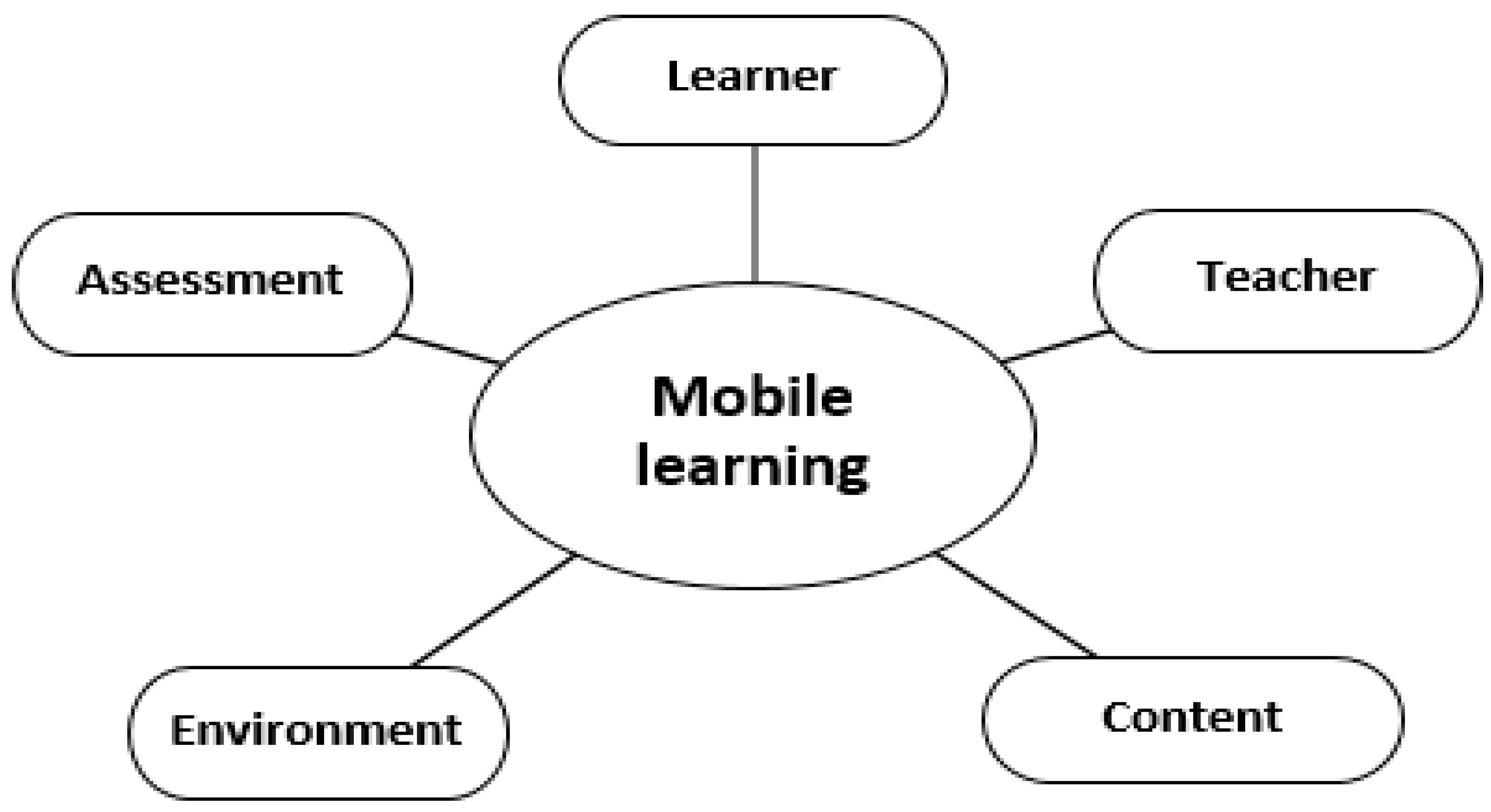
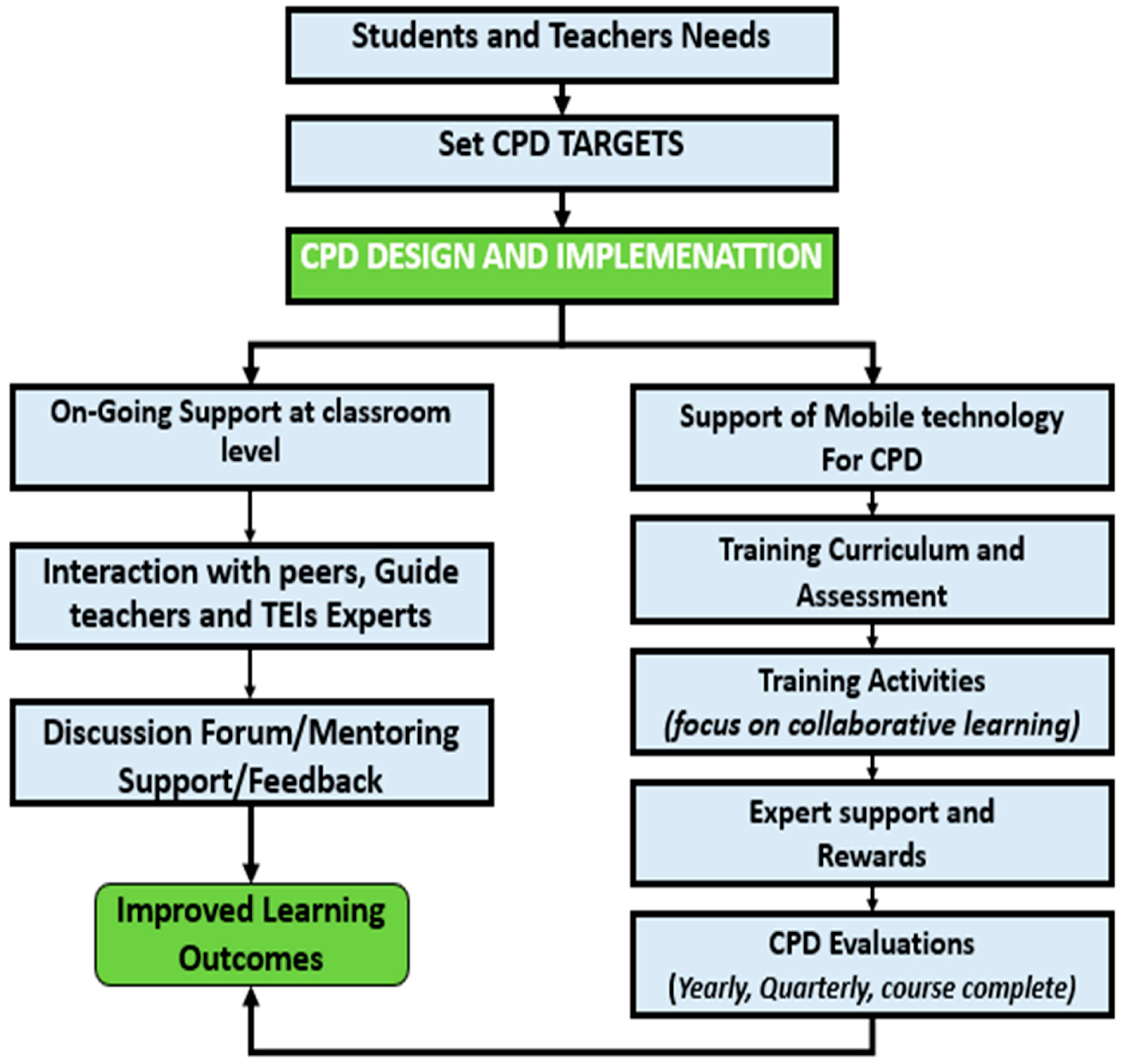
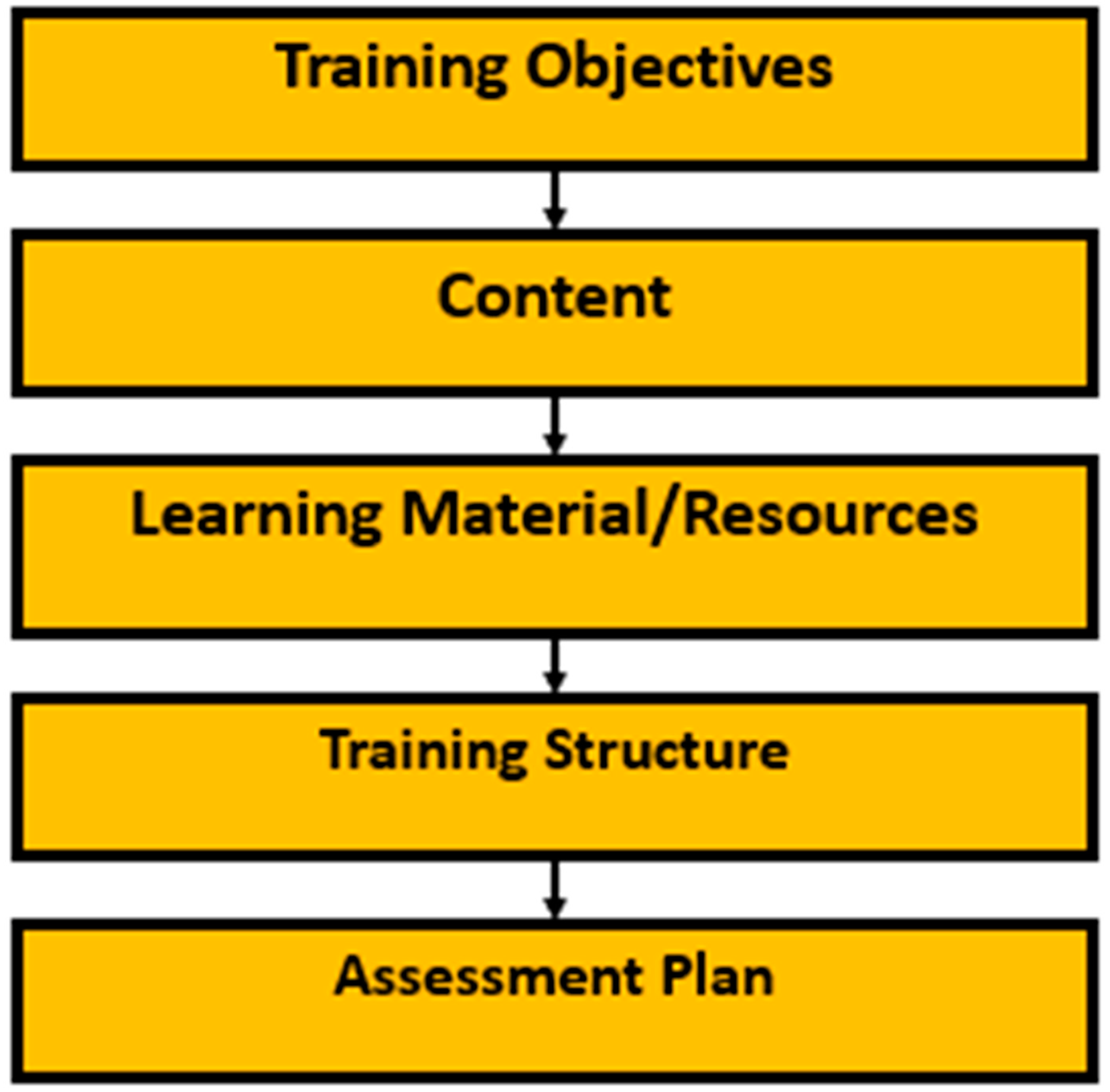
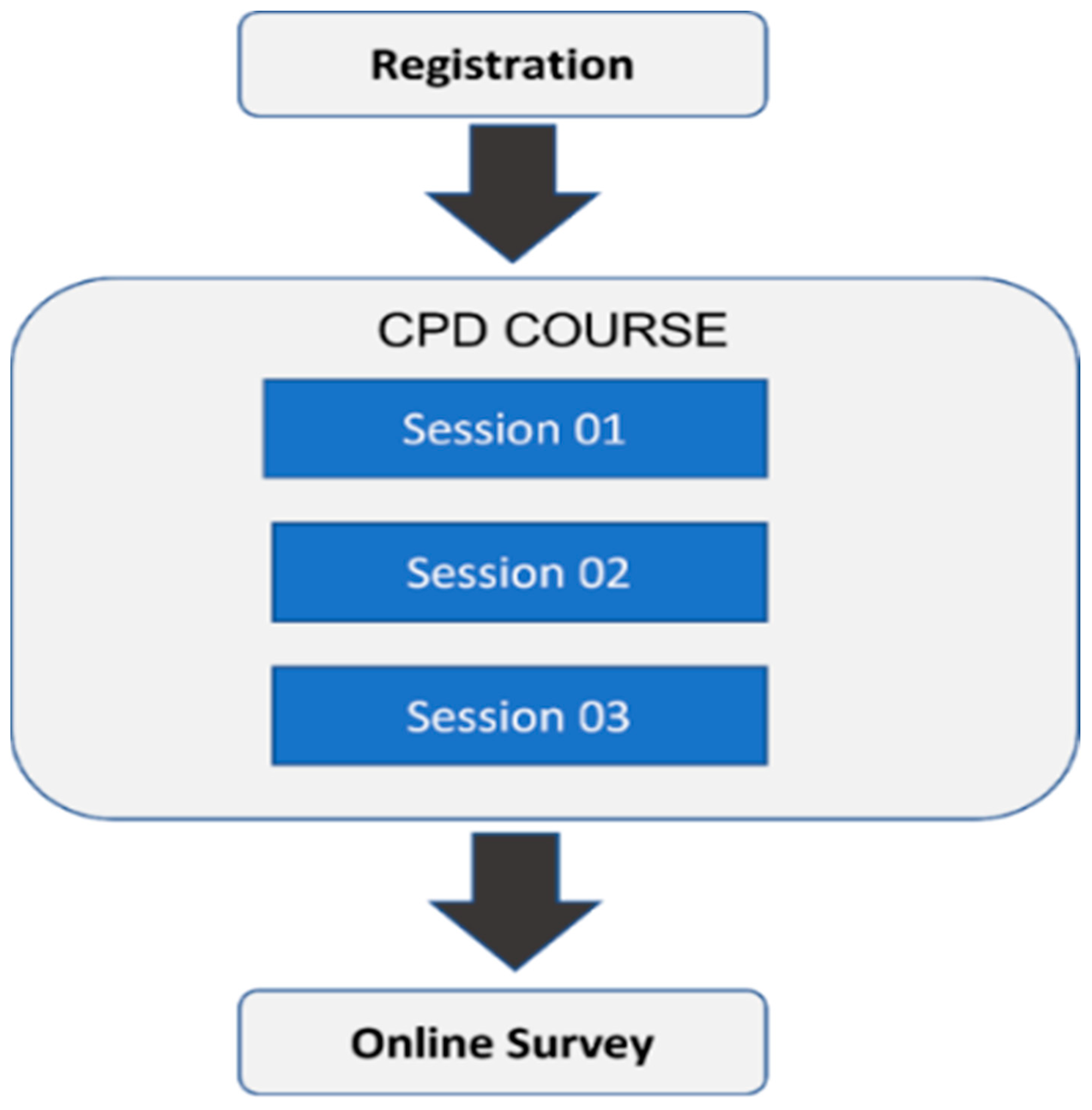
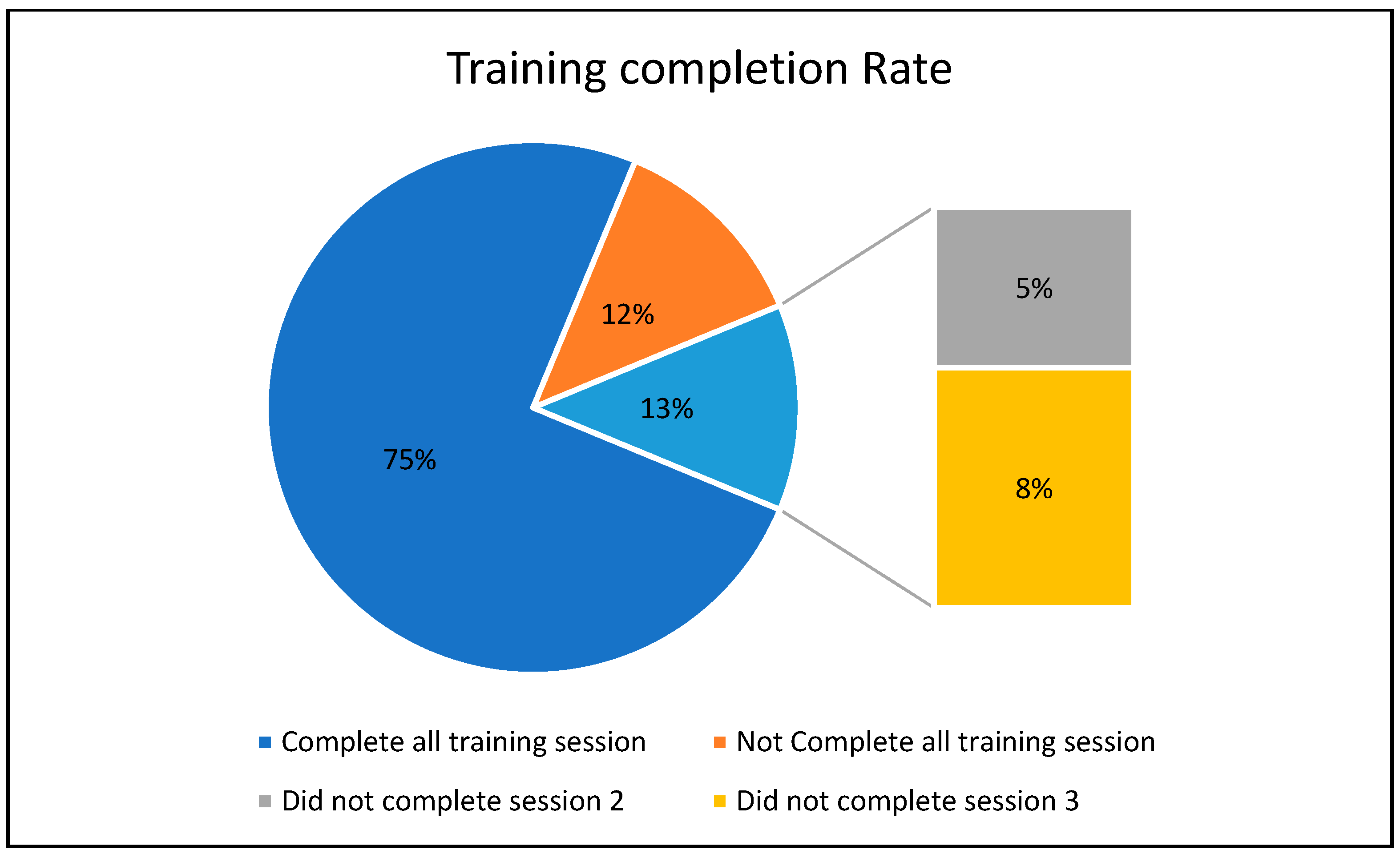
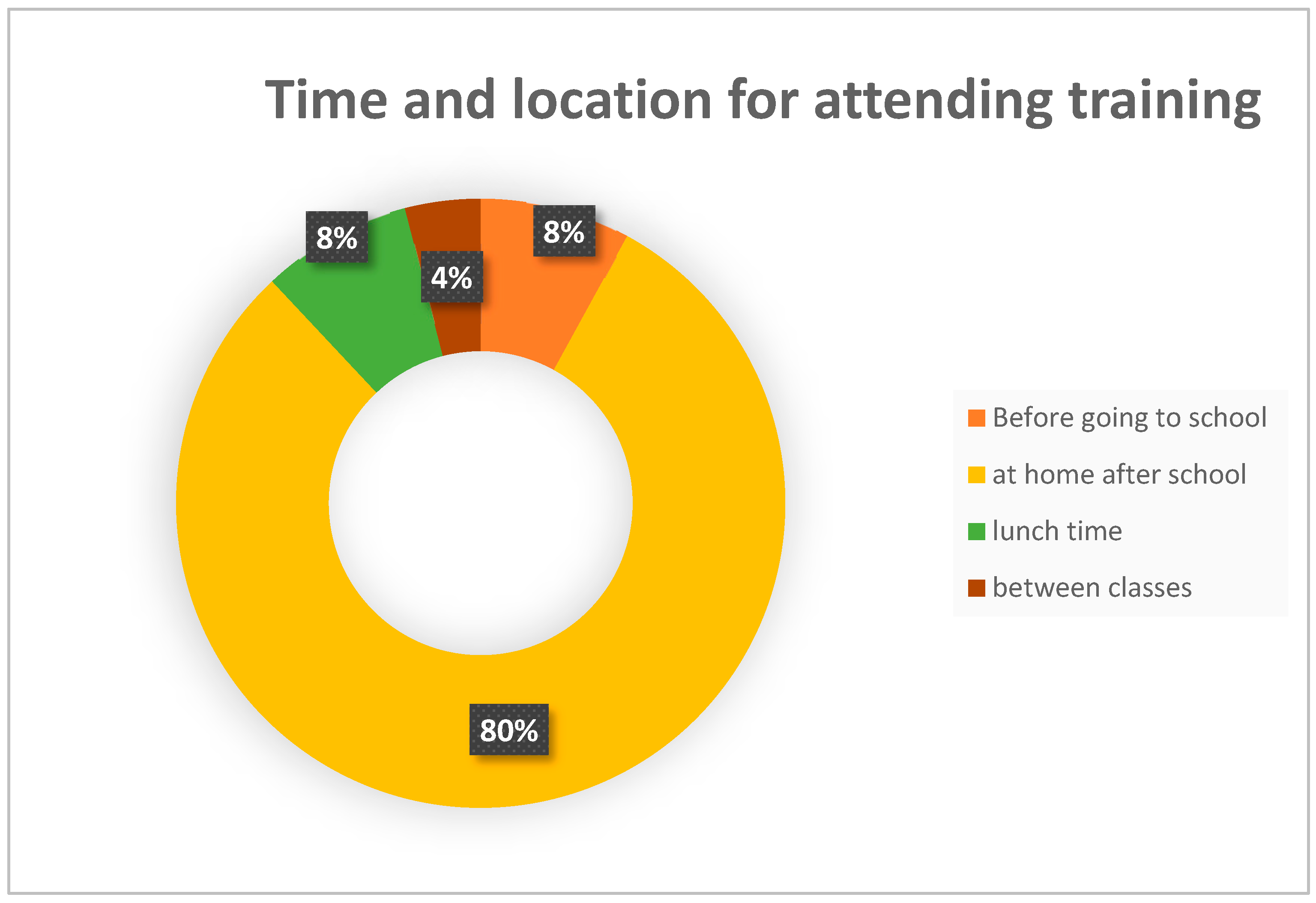
| References | Core Aspects/Characteristics of the Framework | Theoretical Background/ Pedagogical Approach | View of Mobile Learning |
|---|---|---|---|
| [65] | Mobile usability, wireless technology, e-learning system | User studies, e-learning | Natural evolution of e-learning |
| [62] | Technological layer, semiotic layer | Cultural-historical activity theory | Learning mediated by knowledge and technology |
| [66] | Push and pull mechanisms, personalization, collaboration | Constructive and conversational learning | An extension of e-learning |
| [55] | Generic mobile environment issues, learning contexts, learning experiences, learning objectives | Game metaphor | Portable communication devices as central to learning environments, providing access to the learning content |
| [67] | M-learning activity design, requirements and constraints analysis, m-learning scenario design, m-learning technology environment design, mobile learner support services design | Action research results | To enrich people’s learning experiences anytime and anywhere in the most convenient way with their mobile phones |
| [52] | Device aspect, learner aspect, social aspect, context of information | Activity theory constructivism | A process resulting from the convergence of mobile technologies, human learning capacities, and social interaction |
| [54] | Transactional distance, social nature of an activity | The transactional distance theory | Mobile technologies as a learning tool in the distance learning environment |
| [68] | Learner, location, time, content, device | Adaptive learning | Formal learning environment: on the other hand, mobile learning is described as learning anytime and anywhere |
| [69] | The main system criteria, mobile devices, quality of services, application, and learners’ requirements and constraints | System criteria, just-in-time learning | Learning through a relatively small, low-weight device to accompany users anytime and anywhere |
| [70] | Integration of tools, pedagogical approaches, assessment techniques, teacher training | Constructivism, blended learning, collaborative learning, and active learning | Applying mobile technology to learning |
| [71] | Authenticity, collaboration, personalization, unique time-space contexts of mobile learning | Socio-cultural perspective | Process of learning mediated by a mobile device |
| [72] | Self-regulation as an agency; mobile devices as social, cognitive, metacognitive tools; learning process as exercises of agency; social and pedagogical support for learner autonomy | Self-regulated learning | To learn anywhere and anytime; entails learners being motivated and able to self-regulate their learning |
| [73] | External level (social, cultural, and technical factors); intermedium level (content, context, and device); internal level (learner attitude and experiences) | Situated learning and contextual learning | Mobile learning is not only about the mobility of the learners and devices, but also the mobility of learning across contexts |
| [74] | Impacting factors, the mobile learning environment, learning outcomes | Social constructivist theory, activity theory | Mobile learning is the mode for teaching and learning to deliver content to learners; mobile learning can aid both formal learning in traditional classrooms and informal learning outside classes |
| [75] | Mobile learning activity, context, content, technical support, learning process | Dependability evaluation | Mobile learning supplies a a learner with electronic information and content that aids in the acquisition of knowledge regardless of location and time |
| [76] | Key elements are places, tasks, tools, social support, time, and learning journey | Incidental learning | Mobile devices, with their portability, provide the flexibility to learn wherever and whenever; however, the provision of learning support also needs to consider the context |
| Session | Topic | Content/Activities | App-Based Activities | Time |
|---|---|---|---|---|
| Pre-Test 10 min | ||||
| Session 01 (3 h) | Writing lesson plans | Lead in (discussion activity) | Recorded video lecture 1 Collaborative discussion Reflective question 1 | 30 min |
| Why write a lesson plan | Reading handout 1 Discussion Quiz 1 | 30 min | ||
| Components of a lesson plan | Card matching Group discussion Recorded video lecture 2 Reflective questions 2 Quiz 2 | 60 min | ||
| Stages of lesson plans | Group discussion Recorded video lecture 3 Reflective question 3 Quiz 3 | 60 min | ||
| Session 02 (3 h) | Classroom activities and techniques | Scavenger hunt activities | Recorded video lecture 4 Reading handouts 2 Reflective question 4 | 30 min |
| Classroom teaching activities | Go live 1 | 30 min | ||
| Discussing approaches to get attention at the end of activities | Group discussion Recorded video lecture 5 Reflective questions 4 Quiz 4 | 60 min | ||
| Planning and setting activities | Group discussion Recorded video lecture 6 Reading handouts 3 Reflective question 6 Quiz 5 | 60 min | ||
| Session 03 (3 h) | Tips for lesson planning and reflection | Discuss teacher attitude toward the lesson | Peer discussion in forum on reflective question 7 Reading activity 4 | 30 min |
| Identify and evaluate tips for effective lesson planning | Group discussion Recorded video lecture 5 Reflective question 8 Quiz 6 | 60 min | ||
| Planning activities for the textbook lessons and microteaching | Go live 2 Discussion Upload recorded micro lesson Quiz 7 Open-ended reflective questions 7 | 90 min | ||
| Post-Test, 10 min | ||||
| Description | Sample | % |
|---|---|---|
| Gender | ||
| Male | 15 | 42.9 |
| Female | 20 | 57.1 |
| Age | % | |
| 20–30 | 5 | 14.3 |
| 31–40 | 20 | 57.1 |
| 41–50 | 10 | 28.6 |
| 51–60 | 0 | 0.0 |
| Education | % | |
| Bachelor’s | 10 | 28.6 |
| Master’s | 20 | 57.1 |
| PhD | 1 | 2.9 |
| Other | 4 | 11.4 |
| Teaching Experience | % | |
| 1–5 | 27 | 77.1 |
| 6–10 | 7 | 20.0 |
| 11–20 | 1 | 2.9 |
| Variable | Strongly Disagree | Disagree | Neutral | Agree | Strongly Agree |
|---|---|---|---|---|---|
| Perceived usefulness | 0 (0%) | 0 (0%) | 1 (3%) | 10 (29%) | 24 (69%) |
| Learner interface | 0 (0%) | 0 (0%) | 0 (0%) | 5 (14%) | 30 (86%) |
| Content | 0 (0%) | 0 (0%) | 1 (3%) | 4 (12%) | 30 (86%) |
| Personalization | 0 (0%) | 1 (3%) | 0 (0%) | 6 (17%) | 28 (80%) |
| Learning satisfaction | 0 (0%) | 0 (0%) | 0 (0%) | 7 (20%) | 29 (83%) |
| Test | Group | N | Mean |
|---|---|---|---|
| Pre-test score | Control | 35 | 14.5 |
| Post-test score | Control | 35 | 24.5 |
Disclaimer/Publisher’s Note: The statements, opinions and data contained in all publications are solely those of the individual author(s) and contributor(s) and not of MDPI and/or the editor(s). MDPI and/or the editor(s) disclaim responsibility for any injury to people or property resulting from any ideas, methods, instructions or products referred to in the content. |
© 2023 by the authors. Licensee MDPI, Basel, Switzerland. This article is an open access article distributed under the terms and conditions of the Creative Commons Attribution (CC BY) license (https://creativecommons.org/licenses/by/4.0/).
Share and Cite
Dahri, N.A.; Al-Rahmi, W.M.; Almogren, A.S.; Yahaya, N.; Vighio, M.S.; Al-Maatuok, Q. Mobile-Based Training and Certification Framework for Teachers’ Professional Development. Sustainability 2023, 15, 5839. https://doi.org/10.3390/su15075839
Dahri NA, Al-Rahmi WM, Almogren AS, Yahaya N, Vighio MS, Al-Maatuok Q. Mobile-Based Training and Certification Framework for Teachers’ Professional Development. Sustainability. 2023; 15(7):5839. https://doi.org/10.3390/su15075839
Chicago/Turabian StyleDahri, Nisar Ahmed, Waleed Mugahed Al-Rahmi, Abeer S. Almogren, Noraffandy Yahaya, Muhammad Saleem Vighio, and Qusay Al-Maatuok. 2023. "Mobile-Based Training and Certification Framework for Teachers’ Professional Development" Sustainability 15, no. 7: 5839. https://doi.org/10.3390/su15075839
APA StyleDahri, N. A., Al-Rahmi, W. M., Almogren, A. S., Yahaya, N., Vighio, M. S., & Al-Maatuok, Q. (2023). Mobile-Based Training and Certification Framework for Teachers’ Professional Development. Sustainability, 15(7), 5839. https://doi.org/10.3390/su15075839









